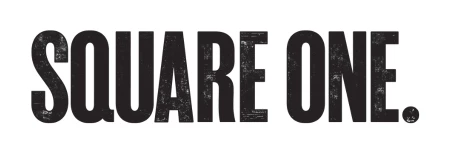
Partner Article
Quick Fix – How to Spot a Phishing Email in 30 Seconds
Between client updates, internal announcements, and the occasional newsletter you don’t remember subscribing to, our inboxes are more crowded than ever. It’s easy to let your guard down.
But hidden among the genuine messages could be something far more dangerous: a phishing email.
Phishing remains one of the most persistent threats to businesses today.
Crafty, convincing, and designed to lure you in, it only takes one wrong click to land in serious trouble.
The good news? With a few simple steps you can learn how to look out for some of the most common signs of a phishing attack.
What is a phishing email?
A phishing email is a deceptive message designed to trick you into revealing sensitive information such as passwords, bank details, or login credentials, or to lure you into clicking a harmful link or attachment.
These emails often impersonate trusted sources like your bank, a colleague, or even your CEO.
The intent behind phishing can vary, from stealing data and hijacking accounts to installing malware. Unfortunately, these scams are becoming more sophisticated, making them harder to detect.
The 30-second spot check
- Check the sender’s address
It might appear to be from “IT Support” or “Accounts Payable”, but hover over the name to see the actual email address. If it’s full of random characters or doesn’t match the company’s domain, it’s probably fake. - Look for spelling and grammar mistakes
Legitimate organisations usually proofread their emails. If you notice typos, awkward phrasing, or inconsistent formatting, treat it as a warning sign. - Watch out for urgency or threats
Phishing emails often try to create panic. Phrases like “Your account will be locked in 24 hours!” or “Immediate action required!” are classic scare tactics. If it’s trying to rush you, pause and think. - Hover before you click
Before clicking any link, hover over it to preview the URL. If it looks odd, misspelt, or doesn’t match the sender’s domain, don’t click. Don’t be afraid to trust your gut – if something doesn’t feel right, it probably isn’t, and it’s certainly not worth the risk. If you’re really concerned, contact your IT team immediately – they'd rather you did that than click the link! - Unexpected attachements? Be cautions
If you weren’t expecting a file, especially from someone you don’t usually hear from, don’t open it. Attachments like PDFs or ZIPs are common ways to spread malware.
Protecting yourself from phishing emails
Spotting phishing emails is only half the battle. Real, long-term protection comes from staying one step ahead.
One of the simplest yet most effective defences is Multi-Factor Authentication (MFA). Even if a password is compromised, MFA adds an extra layer of security that can stop an attacker in their tracks.
Keeping your software and antivirus tools up to date is just as important. These updates often include critical security patches that fix known vulnerabilities, closing the door before cybercriminals can walk through it.
A trusted and reputable IT business partner like ITC Service can and should deliver these services to your business.
Your people are the first line of defence
Technology plays a big part in staying secure, but building a culture of awareness is just as important.
Encourage your team to report anything suspicious. It helps you stay ahead of threats and spot patterns early. Even short, regular training sessions can make a big difference, helping everyone recognise the warning signs and respond with confidence.
Want to know more about phishing protection or awareness training? Get in touch. Taking a few proactive steps now could save you a lot of trouble later.
This was posted in Bdaily's Members' News section by Connor Thomas .
Enjoy the read? Get Bdaily delivered.
Sign up to receive our daily bulletin, sent to your inbox, for free.








 Is construction critical to Government growth plan?
Is construction critical to Government growth plan?
 Manufacturing needs context, not more software
Manufacturing needs context, not more software
 Harnessing AI and delivering social value
Harnessing AI and delivering social value
 Unlocking the North East’s collective potential
Unlocking the North East’s collective potential
 How specialist support can help your scale-up journey
How specialist support can help your scale-up journey
 The changing shape of the rental landscape
The changing shape of the rental landscape
 Developing local talent for a thriving Teesside
Developing local talent for a thriving Teesside
 Engineering a future-ready talent pipeline
Engineering a future-ready talent pipeline
 AI matters, but people matter more
AI matters, but people matter more
 How Merseyside firms can navigate US tariff shift
How Merseyside firms can navigate US tariff shift
 The importance of human insight in an AI world
The importance of human insight in an AI world
 Building a future that benefits everyone
Building a future that benefits everyone